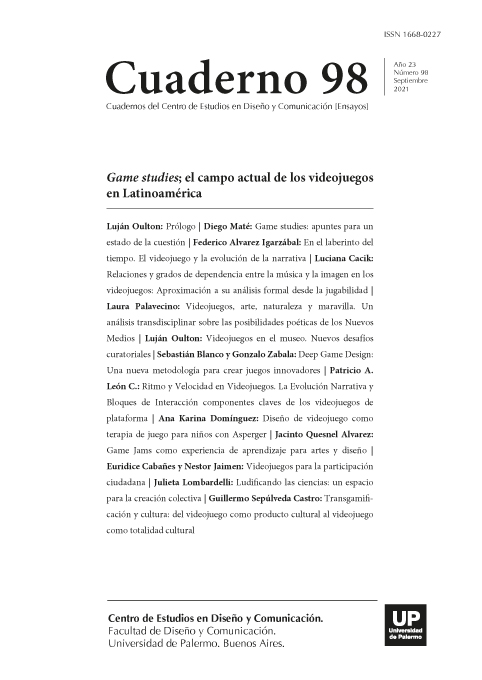Prólogo
Abstract
Abstract: This publications aims to open the path to institutional research in the field of game studies in Latin America. It is integrated by a diverse selection of articles that expose the wide myriad of topics that are being addressed today by academics, researchers, artists, developers and professionals that come from different epistemologies into the video games’ field. This first publication is not thought to work on the specificity of a particular issue, but on the contrary to account for the wide range of approaches, paradigm changes and new concepts that are emerging today when video games are played, re-aproppiated and re-formulated . The articles reflect upon the relationships that can be established between videogames and narrative, between the visual arts and music and among the realms of education, communication and science.
References
Adorno, Theodor & Marx Horkehimer. (1988) La industria cultural. Iluminismo como mistificación de masas Publicado en Horkheimer, May y Adorno, Theodor, Dialéctica del iluminismo, Sudamericana, Buenos Aires.
Bourriaud, Jacques. (2004) Postproducción. La cultura como escenario: modos en que el arte reprograma el mundo contemporáneo. Buenos Aires. Adriana Hidalgo.
Castells, Manuel. (1996) La era de la información. Economía, sociedad y cultura. Vol. Vol I. México: Siglo XXi.
Frasca, Gonzalo. (2001) Videogames of the Oppressed: Videogames as a Means for Critical Thinking and Debate. School of Literature, Communication, and Culture, Georgia Institute of Technolog.
Sibilia, Paula. (2005) E hombre postorgánico. Cuerpo, subjetividad y tecnologías digitales. 2da reimpresión (2015) Buenos Aires. Fondo de Cultura Económica.
Zimmerman, Eric. (2004) Narrative, Interactivity, Play, and Games En First Person. New Media as Story, Performance, and Game, de Noah Wardrip-Fruin and Pat Harrigan. Cambridge: MIT Press.
Los autores/as que publiquen en esta revista ceden los derechos de autor y de publicación a "Cuadernos del Centro de Estudios de Diseño y Comunicación", Aceptando el registro de su trabajo bajo una licencia de atribución de Creative Commons, que permite a terceros utilizar lo publicado siempre que de el crédito pertinente a los autores y a esta revista.


